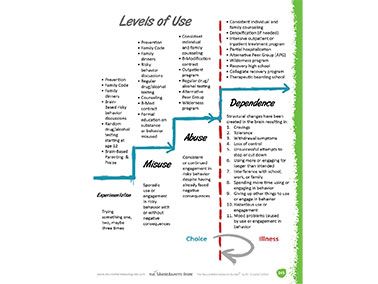
What To Do If My Child is Using Marijuana
by Crystal Collier, PhD, LPC-S author of The NeuroWhereAbouts Guide
First and foremost, follow the functional family rule: Talk, Deal, Trust, Feel. You might be surprised at how many families fail to talk about it using the excuse, ‘Well, I smoked some in high school and I’m okay.’ Some choose not to deal with it by rationalizing, ‘It’s legal now so, it must be safe.’ Others afraid of confrontation decide to avoid the issues that could be causing their kids to turn toward drugs.
In the era of non-regulated, legal marijuana, parents must empower themselves with current data regarding the effects of mass-produced, genetically modified, high-potency cannabis products. Armed with sound science, parents can confidently adopt a drug-free brain policy that is backed by decades of research documenting marijuana’s deleterious effects on neurodevelopment. Although caregivers never need a reason to keep their children safe, the literature on this topic offers thousands.
What was once classified and endorsed by the American Medical Association, a report published in 1972 by the National Commission on Marijuana and Drug Abuse deemed the drug as ‘not a danger to public health’. Today, cannabis fails to receive such a benign classification. Instead, the National Institute on Drug Abuse cites decades of research documenting the adverse physical, mental, relational, and neurodevelopmental effects of cannabis. Unfortunately, this information is overshadowed by misinformation, deceptive advertising, and exploitive social norming techniques used by an unregulated, billion-dollar cannabis industry whose only concern is to create life-long customers. The products they sell are more potent than anything researchers have studied and designed to hook users without concern for public health and safety.
Remember, even in states where cannabis use has been legalized, underage cannabis use is not and thus considered abuse. Once educated about marijuana’s damaging effects, especially on brain development, parents can begin the process of addressing their child’s marijuana abuse by locating a clinician well-versed in youth behavioral health and substance use issues. Finding a counselor or social worker who understands neurodevelopment and change theory will improve the chances for developing a working relationship in which the youth and family may feel supported, especially if hard boundaries must be set.
The clinician will conduct a complete psychosocial assessment to determine a young person’s level of use, stage of change, developmental effects, and environmental dynamics. Yielding an initial diagnosis and potential causes of use will help the clinician make appropriate treatment recommendations. Parents may wonder if their child will be honest when meeting with a clinician fearing that an accurate picture will be difficult to attain. Most often, the floodgates of a young person’s pain and struggles fly open when offered unconditional positive regard from a skilled, Socratic questioning clinician. As any parent knows, secrets have an uncanny way of eventually being revealed. However, this takes time. Committing to participate in counseling as family rather than identifying the youth as the problem will facilitate honesty and healing.
A thorough understanding of a young person’s and their caregiver’s stage of change helps determine initial steps. If a youth is ready for treatment, but their parent is not, the resulting delay in care may yield harmful outcomes such as continued use and deterioration of functioning. If this is the case, parents will benefit from family, or couples work to understand their resistance and overcome obstacles to setting boundaries and receiving help.
More likely, teens and young adults deny the severity of negative effects of marijuana and resist any parental control or therapeutic intervention. At this juncture, it is crucial to remember that it is not a parent’s job to convince their child otherwise or to find a clinician who can. As the wise adage says, ‘A person convinced against their will is of the same opinion still.’ In fact, a young person may never adopt the attitude or beliefs that marijuana is harmful at all. This is not the point. Parents can firmly stand behind their family rule: No drugs because it hurts brain development. Period.
Remembering that not all use is abuse, parents and their kids can use the levels of use chart below to determine where they fall on the continuum. Despite the firm no drug boundary, at this point, allowing for a youth’s autonomy regarding type of intervention is important. Depending on symptom severity, academic standing, and social/emotional needs, parents and children can negotiate the intervention for best fit ranging from therapy and drug testing to residential care.
The only choice that should be off the table is no action at all. Initially, when youth commit to an action plan but fail to follow through, then the consequence is earned rather than imposed by their authority figures. It is customary and therapeutic to institute a behavior contract, not to affect behavior change in the youth but to create a parenting plan for the next time a youth uses marijuana. When devising consequences, remember that ill-conceived rules and harsh punishment have failed to pave the road of healthy decisions. The War on Drugs have taught us this lesson.
Therefore, the behavior contract should be simple. Be sober to earn rewards and privileges. Using drugs earns the loss of rewards and privileges.
